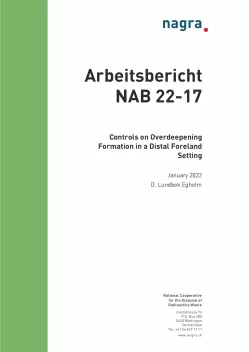
Arbeitsbericht NAB 22-17
Controls on Overdeepening Formation in a Distal Foreland Setting
The aim of the project was to test if the glacial landscape model iSOSIA is capable of producing overdeepenings in distal foreland settings, i.e., in settings similar to the relatively flat foreland north of the Swiss Alps. Nagra is planning the establishment of a deep geological radioactive waste repository in the area, and insights into any future glacial erosion are important for evaluating the long-term safety of the repository.
We know from the present distribution of lakes and glacial deposits that the ice lobes extending from the alpine topography formed overdeepenings in the foreland at distances up to 100 km from the steep mountain topography. It is, however, far from clear why the ice lobes formed these overdeepenings, as their position away from the alpine topography fits poorly with established ideas on patterns of subglacial bedrock erosion by abrasion and quarrying.
It was not the purpose of this pilot study to provide an explanation for the present overdeepenings, but rather to explore the potential for using landscape evolution models to pursue the explanation in the future and to provide reasonable predictions of future foreland erosion.
